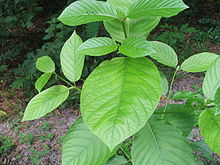In a study presented, at the American Chemical Society’s spring national meeting in San Diego, 16 over weight young adults took, by turns, a low dose of green coffee bean extract, a high dose of the supplement, and a placebo. Though the study was small, the results were striking: Subjects lost an average of 17.5 pounds in 22 weeks and reduced their overall body weight by 10.5%.If green coffee extract were a medication seeking approval from the Food and Drug Administration, these results would make it a viable candidate — more than 35% of subjects lost more than 5% of their body weight, and weight loss appeared to be greater while subjects were taking the pills than when they were on the placebo.
Joe Vinson, the University of Scranton chemist who conducted the pilot study, said the findings should pave the way for more rigorous research on coffee bean extract’s effects. A larger trial involving 60 people is being planned.Vinson, whose research focuses on plant polyphenols and their effects on human health, said it appears that green coffee bean extract may work by reducing the absorption of fat and glucose in the gut; it may also reduce insulin levels, which would improve metabolic function. There were no signs of ill effects on any subjects, Vinson reported.
The study used a “cross-over” design, which allowed each subject to serve as his or her own comparison group. For six weeks, volunteers swallowed capsules three times a day, ingesting either 700 or 1,050 milligrams of green coffee extract a day or taking a placebo. After a two-week break, they moved, round-robin style, to another arm of the trial.Subjects did not change their calorie intake over the course of the trial. But the more extract they consumed, the more weight and fat they lost. Altogether, they reduced their body fat by 16%, on average.Of the 16 volunteers, six wound up with a body mass index in the healthful range.One downside is that the extract is “extremely bitter.” It would be difficult to take without a lot of water, Vinson reported.....
Ref : Detailed article read at
Ref : Detailed article read at
I found the following link more informative...







